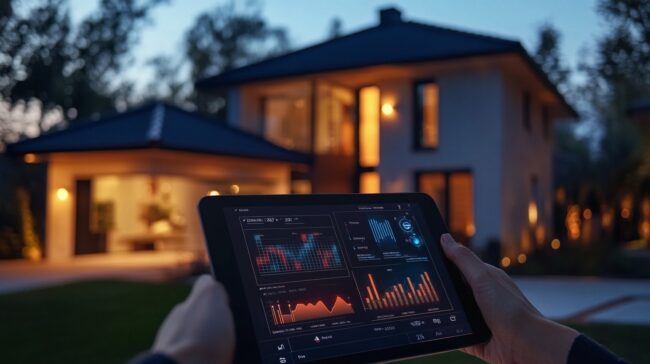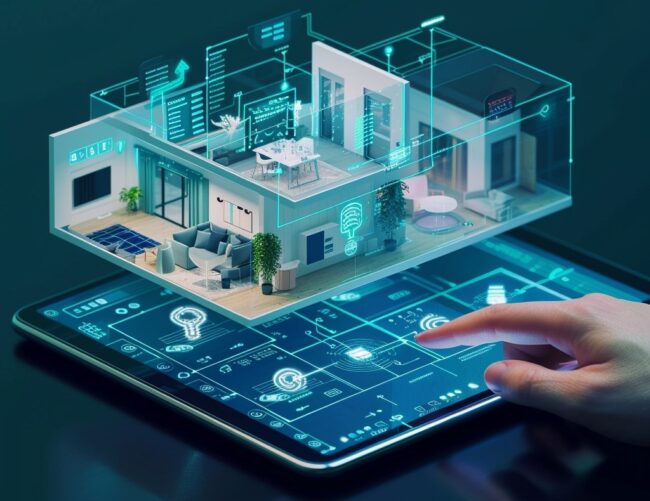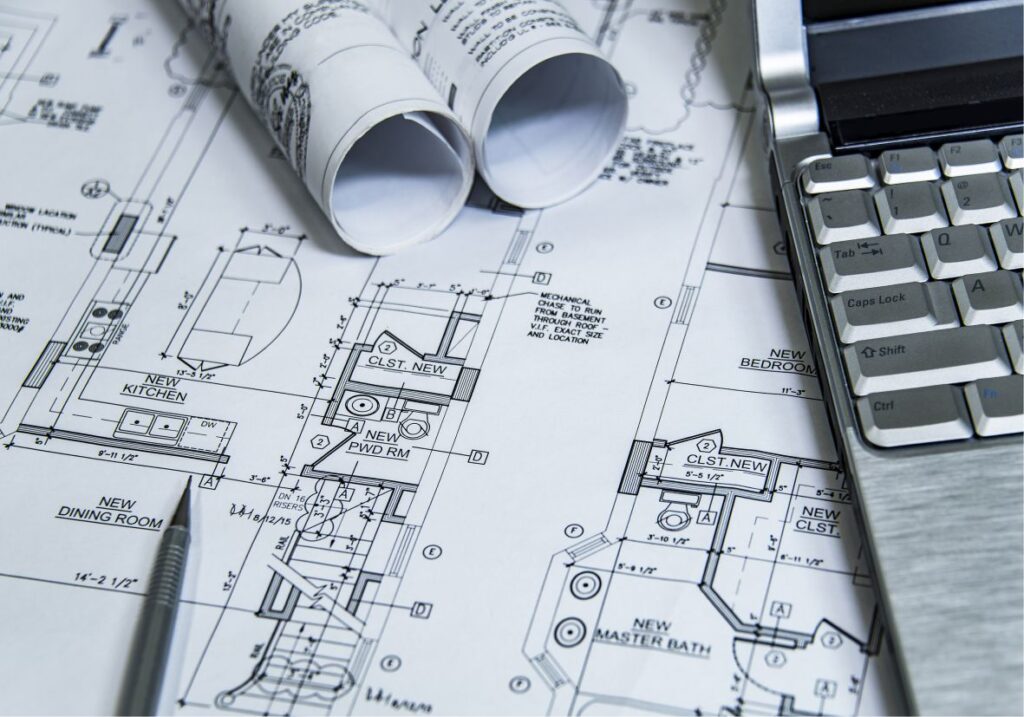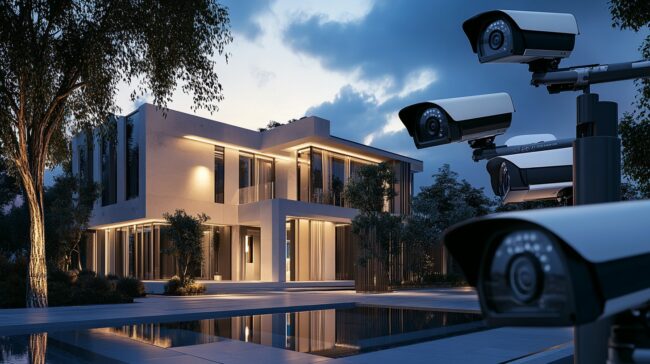Imagine a living space that anticipates your needs, maximizing comfort while boosting efficiency. This article discusses the benefits of smart home remodeling, integrating advanced technology into your home, covering everything from convenience and cost savings to positive environmental impacts. You’ll learn about basic considerations for remodeling, popular smart technologies, and some handy tips for installation and maintenance to keep your home running smoothly.
Smart Home Remodeling: Answers to All Yours Why, How, How Much
What is a Smart Home?
A smart home is all about integrating advanced technology and IoT (Internet of Things) solutions to enhance your living experience. This innovative concept includes home automation systems that let you control and monitor various household functions in real time, from lighting to security.
Just picture your home filled with smart appliances and smart lighting, all seamlessly communicating to boost energy efficiency and make your daily tasks a breeze. Basically, a smart home turns traditional living into a tech-savvy environment tailored to your lifestyle, paving the way for convenience and comfort.

Integrated systems come with smart sensors that detect movement, temperature, and humidity. Plus, home robotics -think robotic vacuums and lawnmowers -take care of tedious chores, letting you focus on what matters.
With voice-activated assistants and smartphone apps, you can effortlessly manage your home settings from anywhere. This digital integration streamlines your daily routines and promotes energy conservation, ultimately creating a harmonious living space that caters to comfort and efficiency.
Benefits of Integrating Advanced Technology
Advanced technology in your home brings a ton of benefits, making life easier and boosting energy efficiency. Think about smart appliances that cut down on your daily chores and home automation systems that let you monitor and control everything remotely.
Just imagine managing your home’s lighting, heating, and security all from a mobile app. It saves you time and energy while seriously enhancing your overall experience, turning your living space into a more comfortable and efficient haven than ever before.
Increased Convenience and Efficiency
One of the best perks of having a smart home is the convenience and efficiency it brings. With smart appliances and home automation systems, you can manage various tasks effortlessly -whether it’s adjusting your smart thermostat or controlling your lighting with just your voice.

This level of automation optimizes your daily routine and improves energy management for a more sustainable lifestyle. Imagine waking up to a home that’s already adjusted the temperature and started brewing your favorite coffee -all before you even roll out of bed!
Plus, with programmable devices like robotic vacuums, you can keep your floors clean without lifting a finger, giving you more time to focus on what matters. Voice-activated tech, like virtual assistants, can set reminders, play your favorite tunes, or even manage your security system, making it a breeze to juggle multiple responsibilities.
The mix of innovation transforms daily tasks from chores into effortless experiences, creating a space where comfort meets modern functionality. Embracing advancements leads you to a more connected and streamlined lifestyle.
Cost Savings and Environmental Impact
Integrating smart home technologies will lead to some significant cost savings and reduce your environmental impact. With energy-efficient smart appliances and smart energy meters, you can easily track and manage your energy consumption, pinpointing spots where you can save on pesky utility bills. Smart home systems offer energy-saving solutions that analyze data in real time, optimizing how you use resources.

Take programmable thermostats, for example. You can schedule your heating and cooling systems to run only when you need them, which means even lower energy costs. And don’t forget about smart lighting solutions—they automatically adjust their intensity based on natural light levels, which reduces electricity use.
Even outdoor watering can be smarter with irrigation systems that only run when necessary, minimizing water waste. The long-term benefits of adopting sustainable designs go beyond saving a few bucks; they create a healthier environment and promote responsible resource use, making your home and community more resilient.
Key Considerations for Smart Home Remodeling
- Choose the Right Remodeler: Select a contractor experienced in smart home technology and with a solid track record of similar projects.
- Assess House Infrastructure: Evaluate the existing electrical and network systems to confirm they can support new smart home technologies.
- Create a Schematic Design: Develop a detailed plan that includes the locations of all devices and how they integrate into the existing layout.
- Determine Budget and Timeline: Set a clear budget and a realistic timeline, considering potential obstacles or delays.
- Prepare Your Family: Discuss the impact of remodeling with family members, including potential disruptions and duration.
- Prepare the Space: Clear the area where work will be done to facilitate easy access and prevent damage to furnishings.
- Plan for System Integration: Confirm all chosen devices are compatible and can be integrated into a single, cohesive system.
- Review Contracts and Warranties: Understand the terms of your agreement with the remodeler and the warranties of the smart devices being installed.
- Establish Communication Protocols: Schedule regular check-ins with your contractor to discuss the project’s progress and any necessary adjustments.
- Consider Temporary Living Arrangements: If extensive work is needed, think about temporary accommodations to minimize disruption to your daily routines.
Assess Home’s Infrastructure
Before you jump into smart home remodeling, take a good look at your home’s infrastructure to make sure it can handle smart home technology. Things like existing wiring, internet connectivity, and your home’s layout are key in figuring out what systems can actually work well together.
You might need to update some of that infrastructure to support advanced home automation and connected devices, which will ultimately lead to a more integrated living environment.

Don’t neglect to thoroughly check your electrical systems. If your wiring is outdated, it could prevent you from installing devices that require more power, like smart thermostats or fancy lighting systems. Also, pay attention to your internet capabilities. A strong Wi-Fi network guarantees that your devices (such as smart speakers, security cameras, and smart locks) will effortlessly communicate.
For example, placing your router in a central spot will boost connectivity throughout your home, cutting down on annoying dead zones that could mess with your smart tech. Lastly, consider your home’s layout. It should allow for the best placement of devices so you can maximize control and energy efficiency.
Popular Smart Home Technologies
You’ve probably noticed a wide range of popular smart home technologies popping up, all designed to make modern living more functional and convenient.
Smart Lighting Systems
Smart lighting systems have taken off because they offer energy efficiency and great control over your home’s vibe. With options like remote access, voice control, and automation, you can adjust the lighting to match your activities or mood. Just imagine dimming the lights in your living room for movie night or cranking them up for a lively family gathering.

There are various smart lighting solutions available to fit your preferences and tech needs. From color-changing bulbs to programmable LED strips, each option has unique features that can seamlessly integrate with your existing home automation systems.
Many smart lights work well with popular platforms like Google Assistant and Amazon Alexa. It’s about convenience; systems also slash your energy consumption, which means lower electricity bills and a more sustainable lifestyle. You can even set up programmable schedules or presets that adjust brightness and color temperature throughout the day, creating the perfect atmosphere for whatever you’re up to.
Smart Thermostats
Smart thermostats are a game-changer for energy management in your smart home, giving you fantastic convenience and comfort. With devices, you can control your home’s temperature right from a mobile app, making it a breeze to adjust settings around your schedule. Just picture this: you walk into a perfectly warm or cool space after a long day. Smart thermostats can learn your preferences and automatically tweak the temperature for your ultimate comfort.
Cutting-edge technology saves serious energy. It can monitor usage patterns and optimize heating and cooling, resulting in lower energy bills. Plus, when integrated with other smart home gadgets, like smart lights and security systems, they offer a smooth, automated experience that feels almost futuristic.
Home Security Systems
Home security systems have improved recently, using IoT technology to provide an extra layer of safety and peace of mind. They come with smart locks, security cameras, and remote monitoring features, allowing you to monitor your home from almost anywhere.

Picture this: you get real-time alerts on your smartphone whenever there’s motion detected near your front door -pretty cool, right? That’s the level of security you can have now.
On top of that, many advanced setups offer biometric security options, like fingerprint or facial recognition, which add another layer of protection to make sure only the right people can get into your home.
Plus, with motion sensors and smart lighting, you can deter potential intruders by creating the illusion that someone is home, even when you’re away. With remote access, you control your security system from a distance, easily locking doors, viewing live camera feeds, and adjusting settings whenever you need to.
When all components work together, they create a comprehensive security solution that boosts your overall safety.
DIY vs Professional Installation
Deciding whether to go the DIY route or hire a pro for your smart home devices comes down to a few key factors: cost, complexity, and how comfortable you feel with technology.
If you choose the do-it-yourself option, you could save a good chunk of change and gain a better understanding of how everything works. Just keep in mind that it might take a fair bit of time and effort, especially if you’re dealing with more complicated systems.
On the flip side, bringing in a professional gives you the peace of mind of knowing that experts are handling it. They will tackle any issues quickly and guarantee everything runs effectively.
Maintenance and Troubleshooting Tips
Regular Software Updates: Keep all smart home devices updated with the latest software versions. Updates often include security patches and functionality improvements that enhance device performance and security.
Network Security: Secure your home network by using strong, unique passwords for your Wi-Fi network and smart devices. Consider using a separate network for your smart home technologies to isolate them from your regular internet usage.
Routine Inspections: Regularly check all smart devices and systems to confirm they are functioning correctly. Look for signs of physical damage or performance issues, and address them promptly to avoid bigger problems later.
Professional Check-Ups: Schedule annual check-ups with a smart home professional who can assess the system’s health, make necessary adjustments, and recommend upgrades or replacements as technology evolves.
User Training: Make sure all household members know how to operate the smart home features effectively. Familiarity with the system’s capabilities and controls will maximize its potential and prevent misuse or accidental damage.
Why You Should Remodel Your Home and Make it Smarter (Pure Statistical Data)
The smart home market has experienced significant growth over the past few years, driven by technological advancements, increased consumer demand for convenience and energy efficiency, and a growing awareness of its benefits. Below are key statistics and trends regarding the smart home industry.

Energy Savings after Remodeling Your Home to Be Smart
- Efficiency Gains: Smart heating and cooling systems lead to energy savings of up to 50%. Additionally, smart thermostats save homeowners about 10-12% on heating costs and approximately 15% on cooling costs annually.
- Monthly Savings: Users of smart home products report average monthly savings of about $98.30, which translates to roughly $1,179.60 per year.
Costs of Remodeling
- Installation Costs: Converting a traditional home into a smart home can cost between $970 and $3,310, depending on the complexity and range of devices installed.
- The average cost of installing a single smart home device is about $927.
- Custom installations for larger homes ranging from $20,000 to $150,000.
- Value Addition: Implementing smart home technology increases property value by at least $50,000, according to real estate agents.
- Homes equipped with smart technology are reported to sell faster than traditional homes by about 33%.
Real-life Remodeling Project Completed Recently
In our most recent project a month ago, we transformed a client’s kitchen and bathroom into modern, smart spaces. Here’s how we did it:
- Smart Refrigerator and Oven: Installed to track groceries and control oven settings remotely, enhancing meal planning and preparation flexibility.
- Voice-Controlled Faucet: Fitted at the kitchen sink to enable hands-free operation, which is especially useful during cooking.
- Advanced Lighting Systems: Implemented to adjust based on the time of day and activity, controlled via smartphone or voice.
- Smart Plugs: Added to allow control of non-smart appliances via smartphone, extending convenience.

- Interactive Smart Mirror: Installed with LED lighting, weather updates, and news, integrating daily conveniences directly into the morning routine.
- High-Tech Toilet: Features automatic lids, self-cleaning technology, and seat warmers for enhanced comfort and hygiene.
- Smart Shower System: Set up to allow pre-setting of water temperatures and control over shower durations through a digital interface.
- Smart Ventilation System: Installed to automatically activate when humidity levels rise, preventing mold and efficiently managing humidity.
The recent smart home remodeling uplifted daily operations and comfort, impacting family life positively in several ways.
- The integration of smart appliances in the kitchen and advanced systems in the bathroom modernized the space and brought considerable time and energy savings.
- Voice-controlled kitchen faucets and smart mirrors reduce the need for physical interaction and minimize the spread of germs.
- Smart lighting and appliances that adjust automatically to usage patterns also contribute to energy efficiency, lowering utility bills and reducing the household’s environmental footprint.
The family can monitor and control their home environment from any location. Overall, all augmentations save time and costs and increase the comfort and security of the home. They enrich the family’s lifestyle and make daily interactions with their living space easier.
General Statistics
Market Growth
- Current Market Value: The global smart home market was valued at approximately $168.9 billion in 2023 and is projected to reach around $633.2 billion by 2032, reflecting a compound annual growth rate (CAGR) of 22.9% during this period.
- Historical Growth: Consumer spending on smart home systems has increased from $86 billion in 2020 to an estimated $149.43 billion by 2025, indicating a substantial rise in adoption.
- Future Projections: By 2025, global consumer spending on smart home technology is expected to exceed $170 billion, marking a growth rate of approximately 26% from previous years.
Adoption Rates
- Global Reach: As of now, there are an estimated 175 million smart homes worldwide, with projections indicating that over 37% of new homes will include at least one smart device by 2025.
- Consumer Comfort Levels: Approximately 56% of U.S. adults express comfort with smart home technology, highlighting the growing acceptance among consumers.
Market Segmentation
- The largest segment within the smart home market includes security systems and lighting controls, which account for nearly 33% of all smart devices used globally.
- The U.S. market alone is expected to grow from about 24.34 billion in 2023 to $78.92 billion by 2030, showcasing robust domestic demand for smart technologies.
Conclusion
The data reflects a vibrant and rapidly developing smart home market characterized by considerable growth in consumer adoption and technological advancements. As energy efficiency becomes increasingly important for homeowners, the integration of smart technologies will continue expanding into the next decade.



